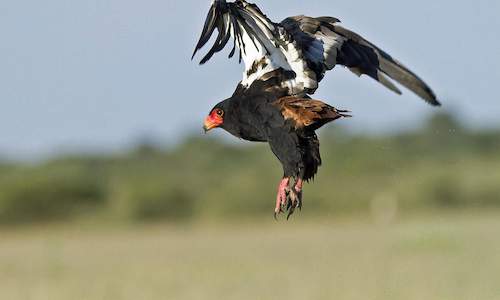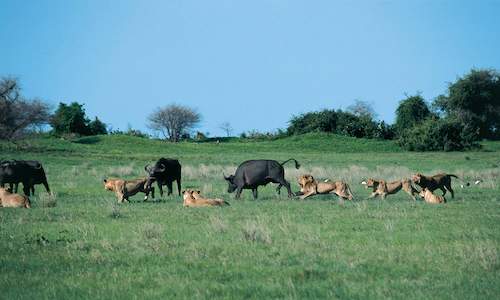Transfrontier Parks of the Future
Transfrontier Parks are the way of the future but none can be more exciting than the proposed Kavango Zambezi Transfrontier Conservation Area (KAZA TFCA) which will include some of Africa's greatest wilderness areas.Dividing the Wilderness
Africa has a great variety of parks, with many linked through ancient migration routes of animals. With the coming of colonialism the wilderness was
divided up with the division of countries, and in most cases the ancient migration routes ceased to exist.
Civil war and greed then put paid to any hope for re-establishing these traditional migration routes as
countries took control of their own parks and formulated their own set of rules for the management of these parks. Outside interference was frowned upon and as such the wildlife was devastated in many cases.
Birth of an Ideal
There were a few instances of countries working together to protect the environment but these were the exception rather than the rule. With the rise in community tourism the ideal of
shared parks between countries took hold, but it was a difficult process as many countries have suffered political and civil upheaval.
In the past decade, however, the ideal of Transfrontier Parks has come to the fore, with southern Africa leading the way. The establishment of
Transfrontier Parks has led to greater co-operation and sharing of ideas between conservationists of different countries, and thereby ensuring the wilderness areas of Africa have a chance of survival against the pressures of rampant development and human population expansion.
Transfrontier Parks of Southern Africa
Some of the countries in Southern Africa that have entered into transfrontier agreements with each other are Botswana and South Africa with the
Kgalagadi Transfrontier Park that encompasses the Kalahari Gemsbok National Park of South Africa and the Gemsbok National Park of Botswana.
South Africa, Mozambique and Zimbabwe signed the Great Limpopo Transfrontier Park into existence and will combine Limpopo National Park in Mozambique, Kruger National Park in South Africa and Gonarezhou National Park in Zimbabwe, together with some other wilderness areas in the three countries to form a conservation area of over 35 000 km².
Northern Botswana and its Neighbours
One of the most exiting transfrontier developments, however, has to be the development of the Kavango Zambezi Transfrontier Conservation Area (KAZA TFCA) which brings together the countries of Angola, Botswana, Namibia, Zambia and Zimbabwe to form the
world's biggest conservation area which could eventually cover more than 440 000 km2.
The proposed park will
include 36 national parks, game reserves, community conservancies and game management areas, with some of the world's most dramatic wilderness areas included, such as Caprivi Strip, Chobe National Park, Okavango Delta and the Victoria Falls.

Wildlife in Botswana National Parks has been attracting international interest for more than 150 years. Today Botswana National Parks and Ga...
more
Botswana is unique when it comes to African safaris, with fascinating landscapes unlike anywhere else on the continent and beautiful ecosyst...
more
